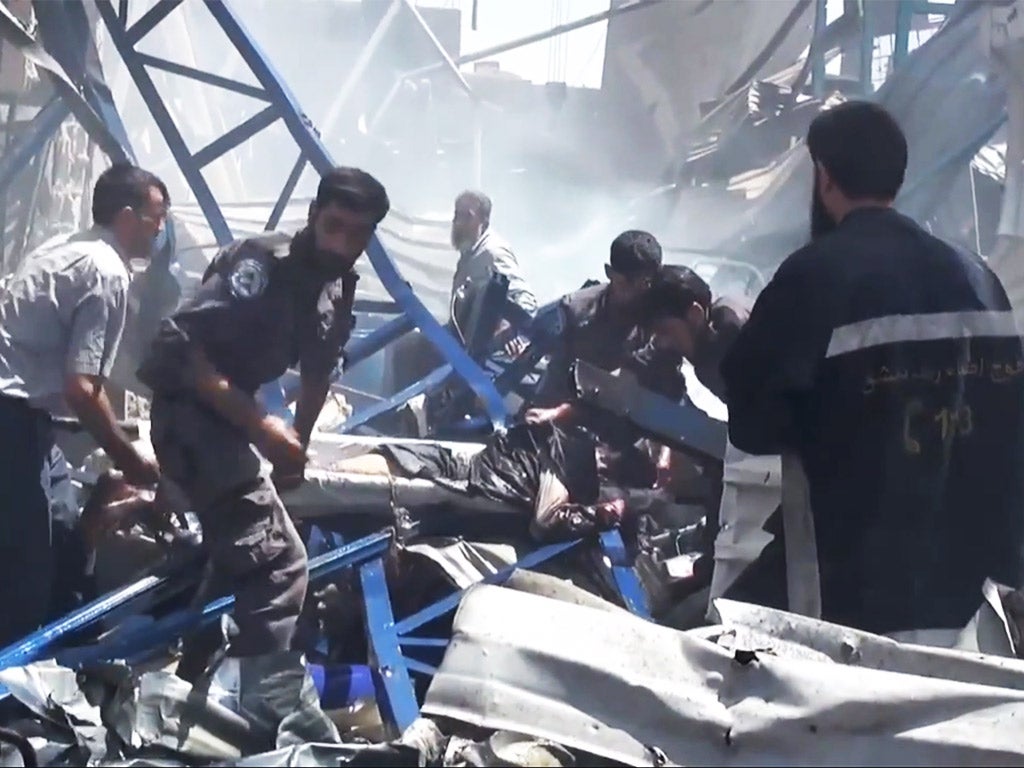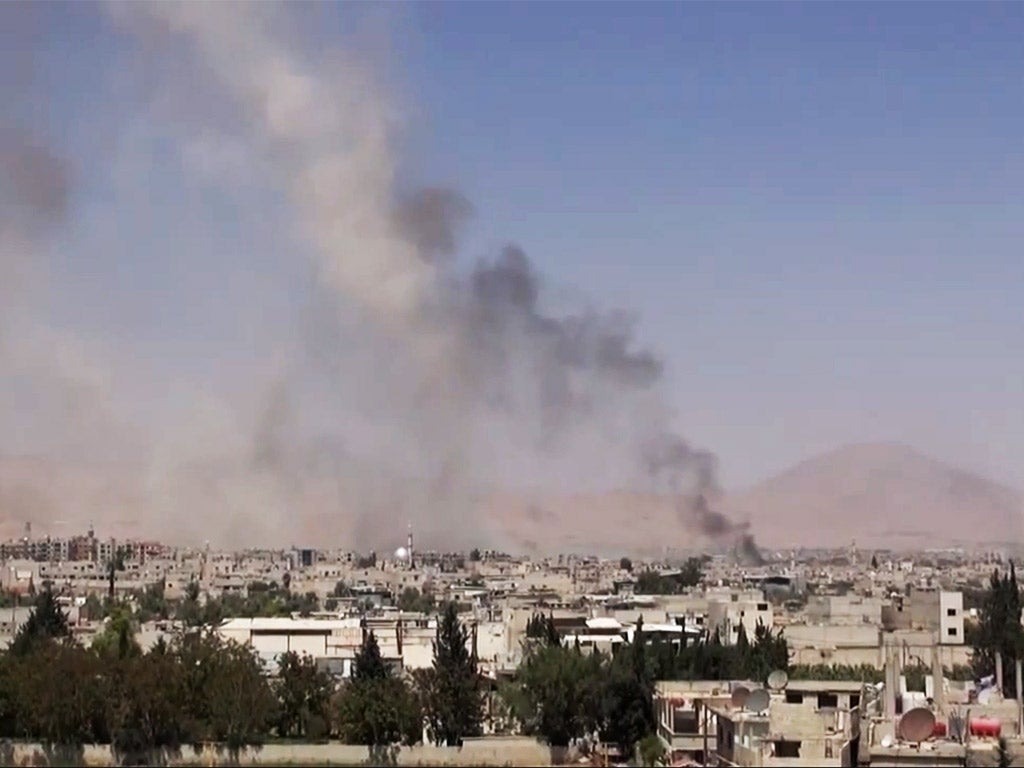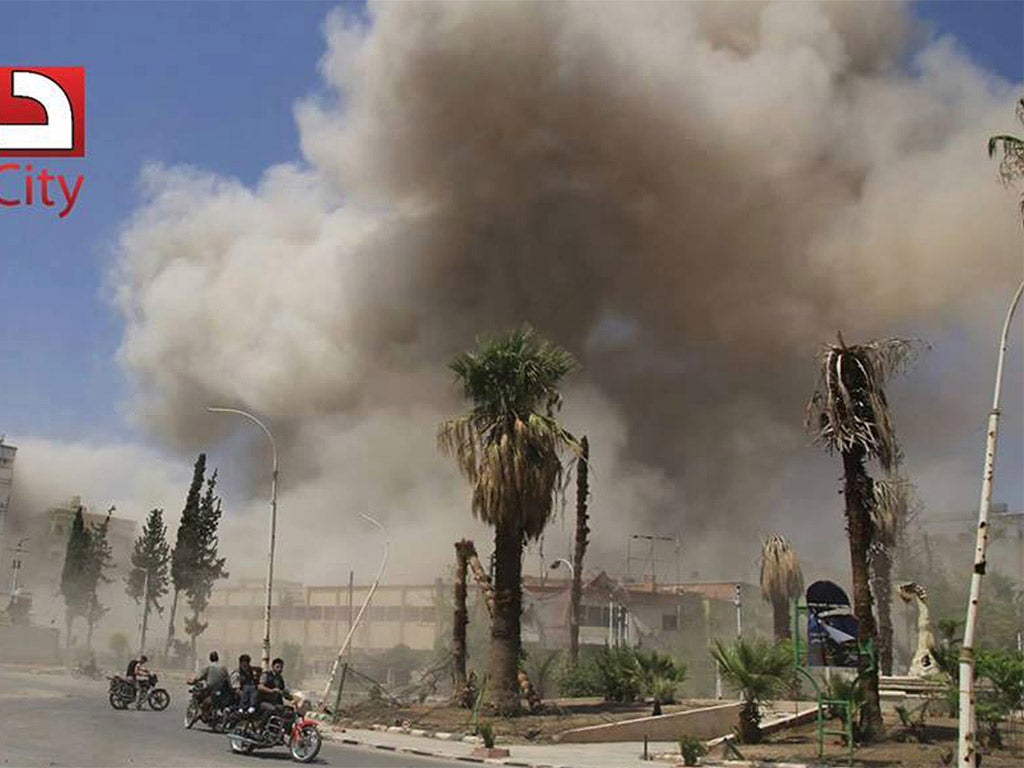Syria civil war: Civilians in Damascus pay the price for those in the provinces in conflict's balance of horror
There are no good guys on either side, and the more cornered each becomes, the more they strike at the innocent


It’s a balance of horror. Bombard Douma in the suburbs of Damascus to protect the civilians of Kifraya and Foaa in Idlib province. Teach the rebels that the Syrian government is as ruthless as ever, that it will not tolerate a threat to the capital’s water supply or rebel mortar explosions in the centre of the city. And Douma pays the price.
A hundred dead under the bombs of the Syrian government air force, then a second raid while rescuers search for the victims of the first. That’s what the Israelis did when they bombarded west Beirut in the summer of 1982. Who learns from whom in the Middle East?
But in civil wars, both sides learn from each other. For the opposition in Syria – and defining even the “opposition” is difficult enough these days – the regime’s onslaught on Douma was an unprovoked act of savagery, culminating in the bombing of a busy market. For the regime, it was a furious response to the mortars that exploded in central Damascus five days ago, killing six people and – more seriously – suggesting that the government could not even protect its people in the very centre of its capital.


But there were other reasons for the bloodshed. Ever since the city of Idlib fell to rebels in the north of Syria on 10 March, the two Shia Muslim villages of Kifraya and Foaa have been under siege – and over the last few days, under perpetual mortar bombardment. The regime fears that the 40,000 Shia living in these surrounded villages will be massacred if forces of the Jaish al-Islam militia capture them. So the cruel equation goes like this: lift the siege of these provincial villages, spare the people in them – almost all, naturally, supporters of President Bashar al-Assad’s government – and the destruction of Douma will end, at least temporarily.
That’s how civil wars play out. There are no good guys – except the civilians, of course – and the more cornered each side becomes, the more they strike at the innocent. The water resources of Damascus flow down from Zabadani, where the old steam train railway line runs into the Qalamoun hills, and Syrian military forces have been concerned for weeks that the Jabhat al-Nusrah rebels in the area may cut the water to the capital. There have been vain attempts to secure a local ceasefire around Zabadani. The truce failed. So Douma pays the price.
Isis, meanwhile, is also threatening the lives of the innocent after its capture of the town of al-Karyateen, south-west of Palmyra, where it took hostage more than 230 Christian civilians. The Syrian army, which lost Palmyra to Isis in May of this year, has moved forward again and encircled part of the old Roman city with its 50,000 population – Syria’s forward troops can now again see the famous ruins – but Isis is threatening to execute its Christian captives if the army advances further. Operational plans to recapture Palmyra have thus been postponed.
Further north on the Orontes river, the Nusrah front gained some ground after their capture of Jisr al-Shugour earlier this year. Several government-held villages which I visited south of the newly-captured town in June have since been taken by Nusrah, and the colonel I interviewed there was wounded during the battles. Another officer I briefly met has been killed. The Syrian army is now facing enemies – these are official estimates by the military – on up to 80 separate fronts, sometimes no more than a few thousand metres wide. Hence the need for support from the Iranian-paid Hezbollah militias from Lebanon and from Iranian officers themselves. The former’s assistance is welcomed, the latter’s perhaps less so. The lessons of the 1980-88 Iran-Iraq war do not automatically lend themselves to the army-guerrilla conflict now being fought out in Syria.
As for the UN’s repeated demands for an end to the killing of civilians “by both sides”, they have as little chance of being heeded today as foreign calls for an end to the war itself. Douma’s bloodletting has not ended. Nor that of Damascus.
Bookmark popover
Removed from bookmarks